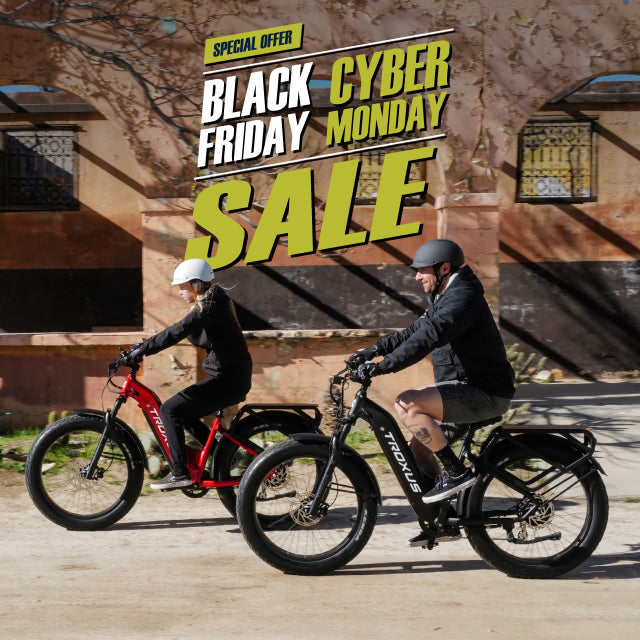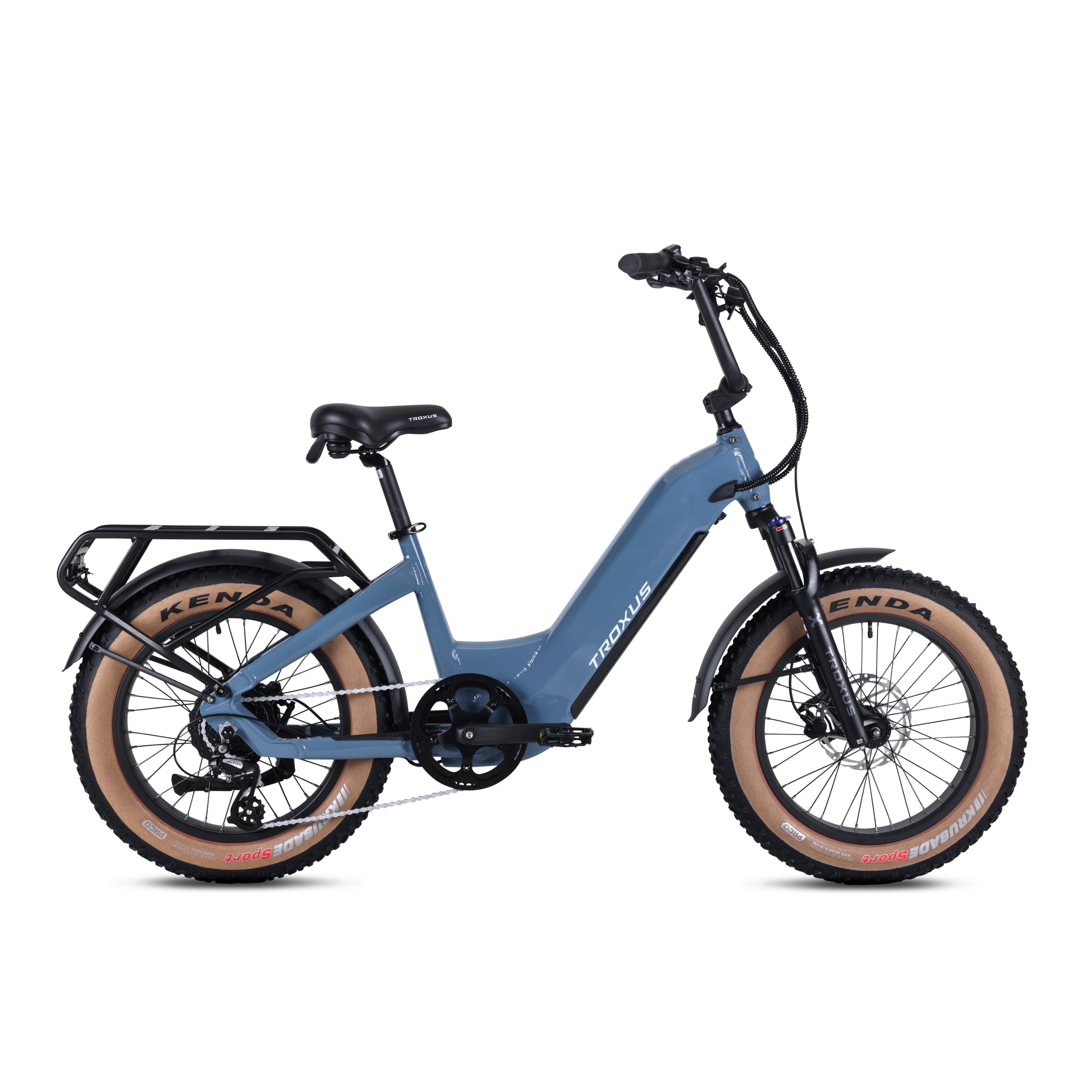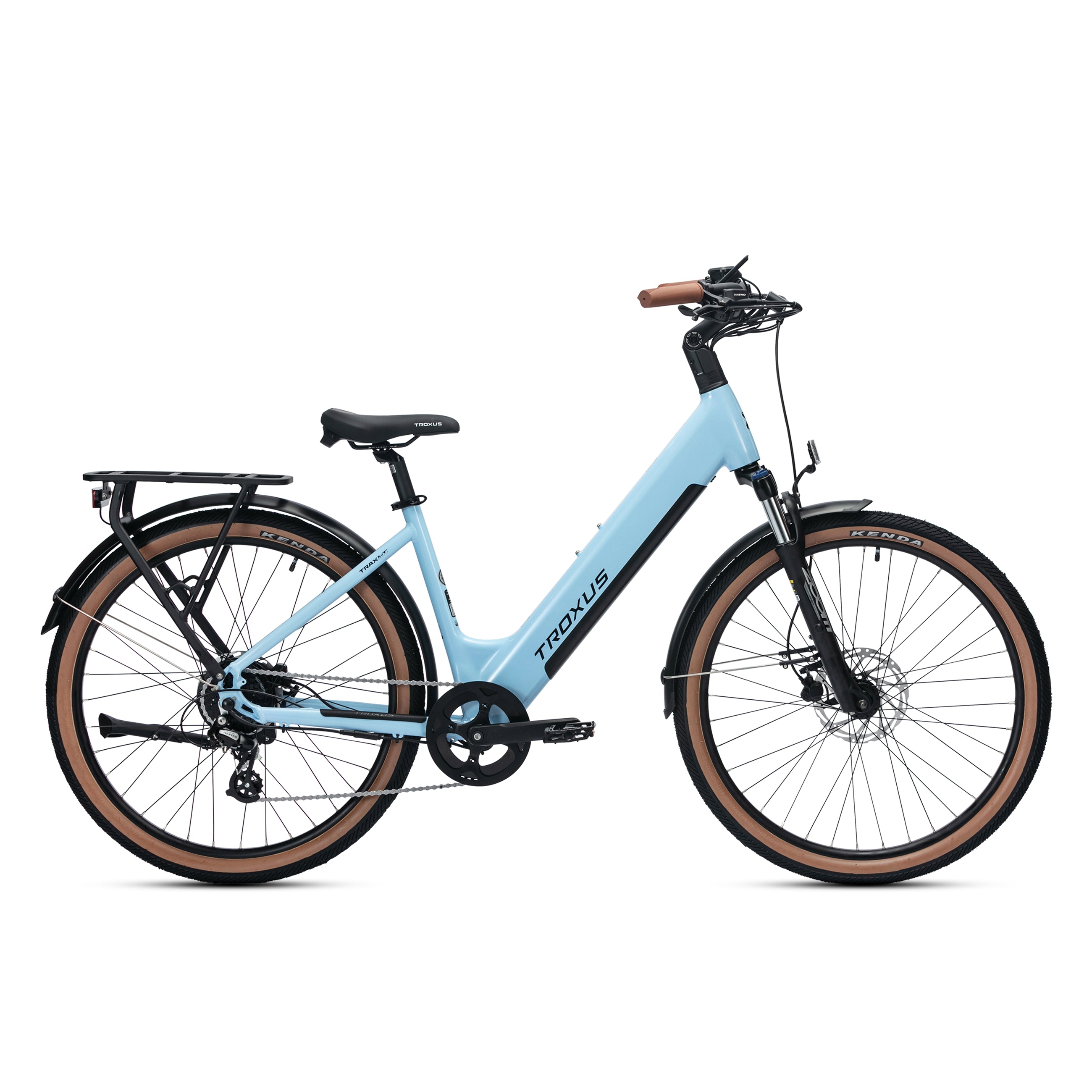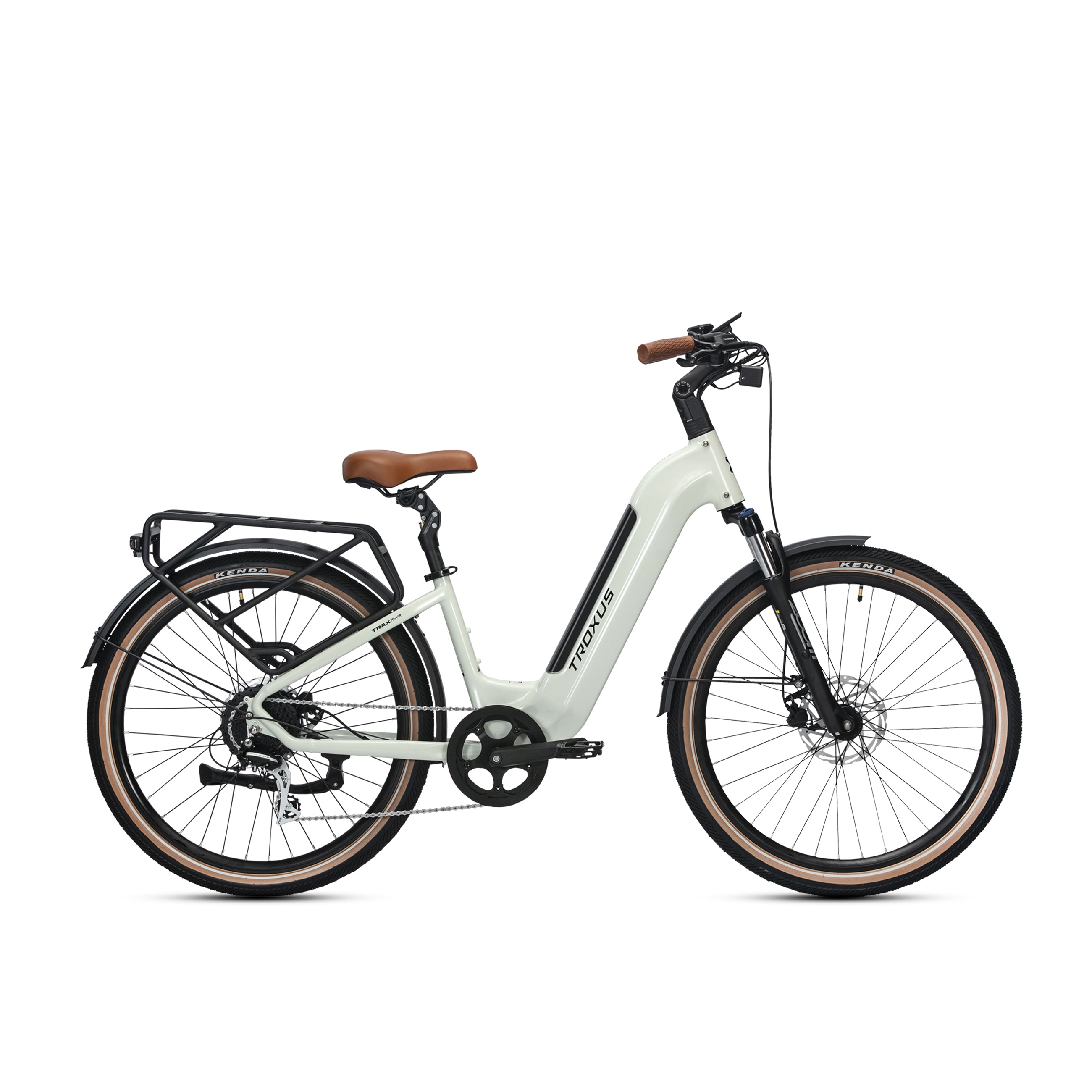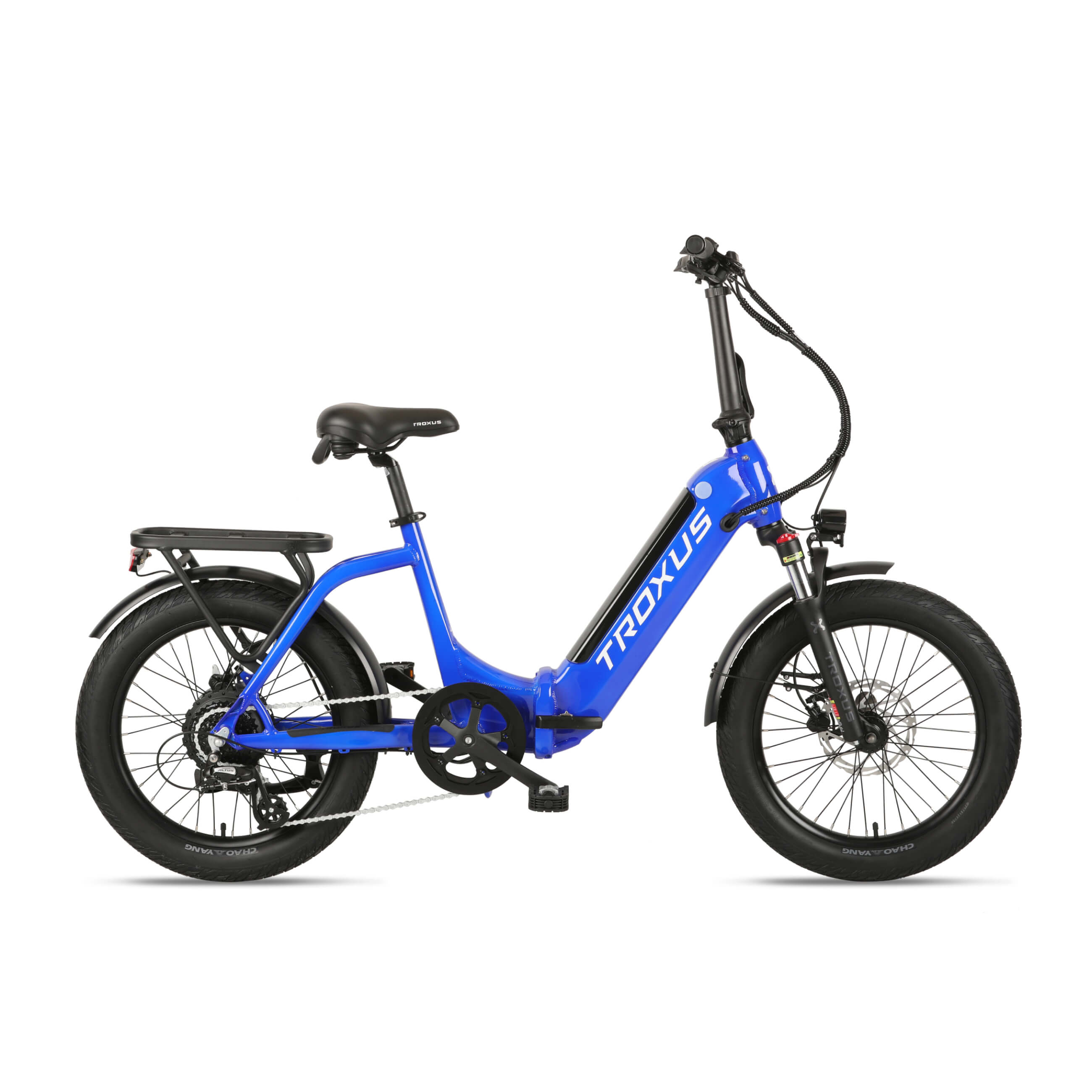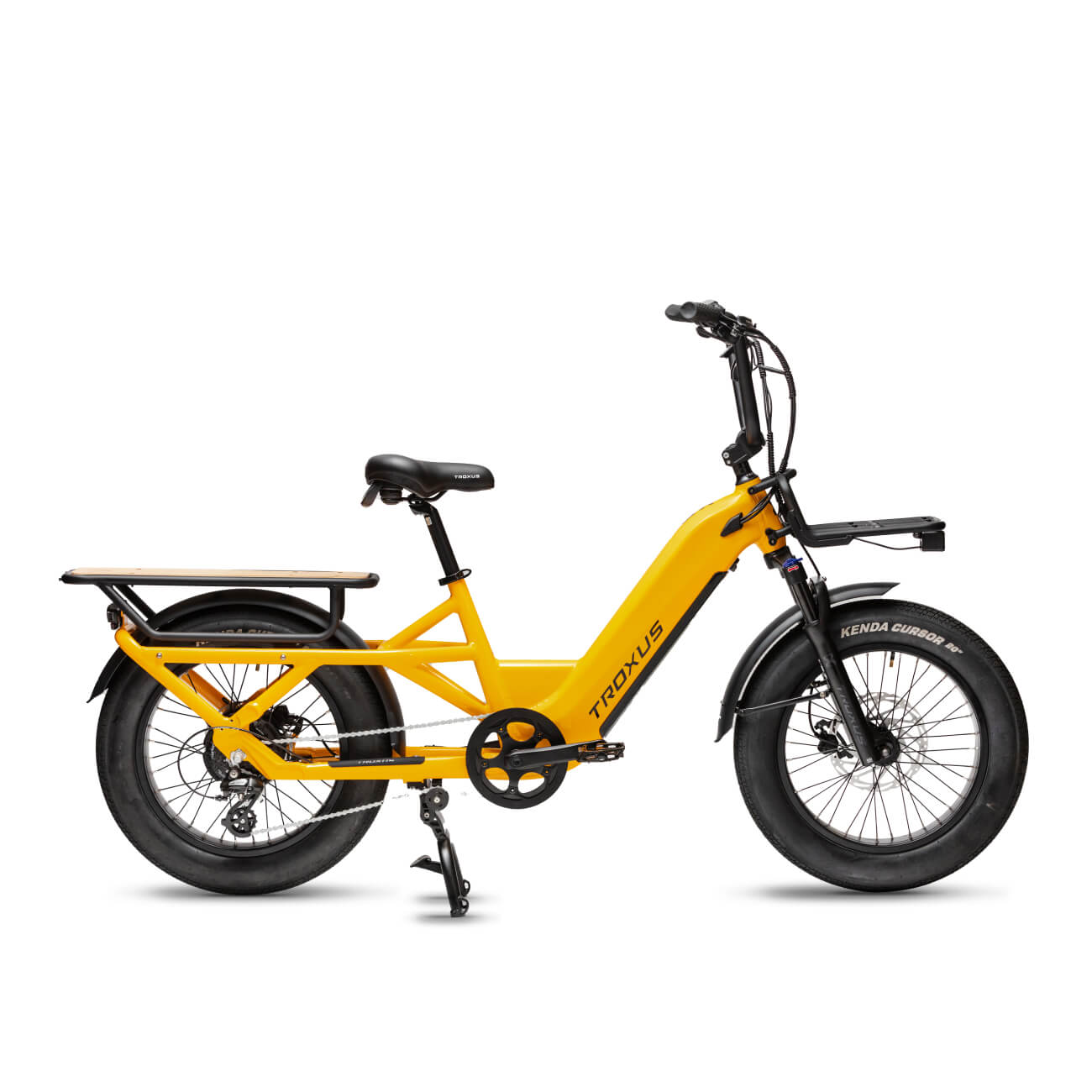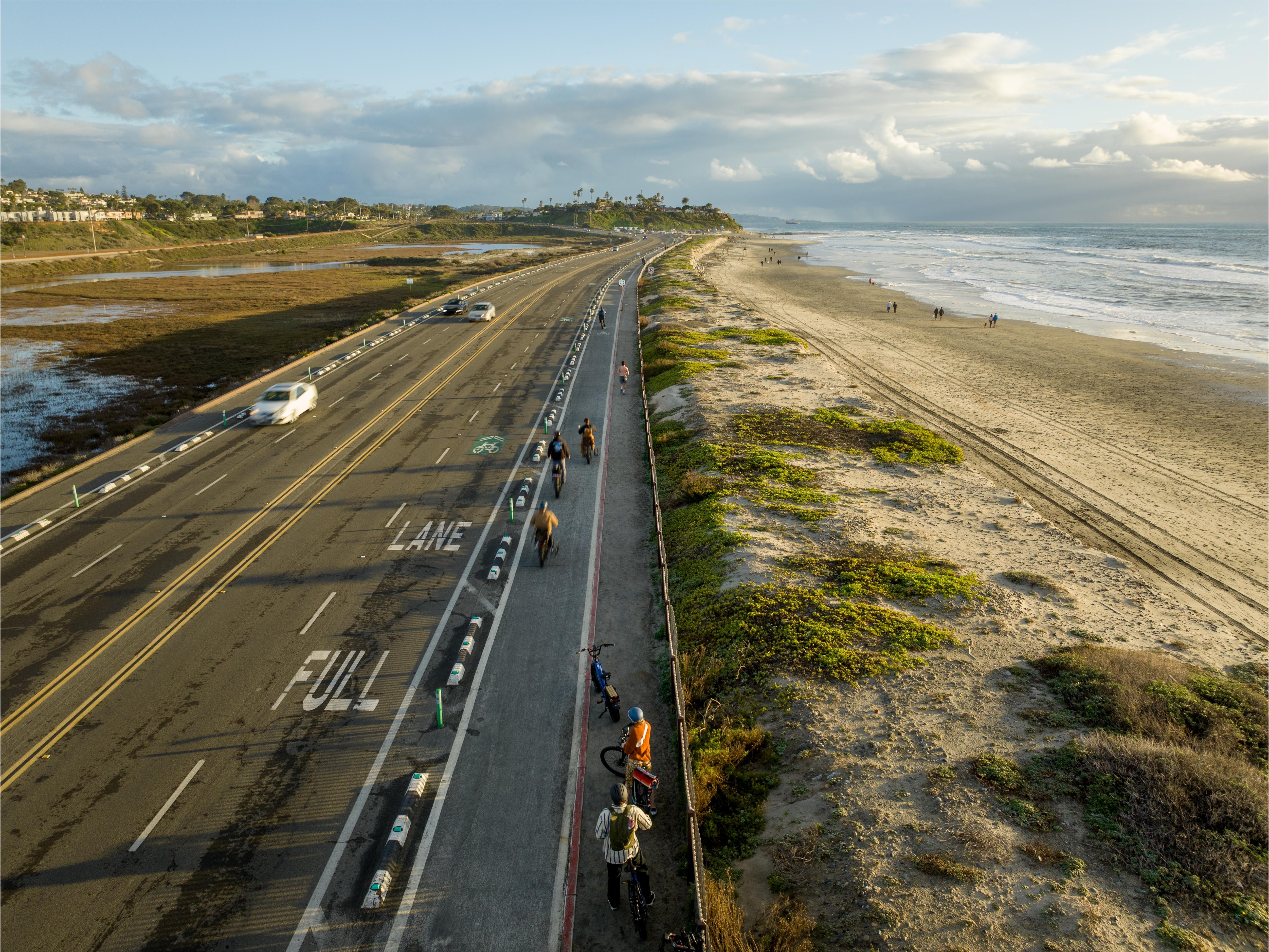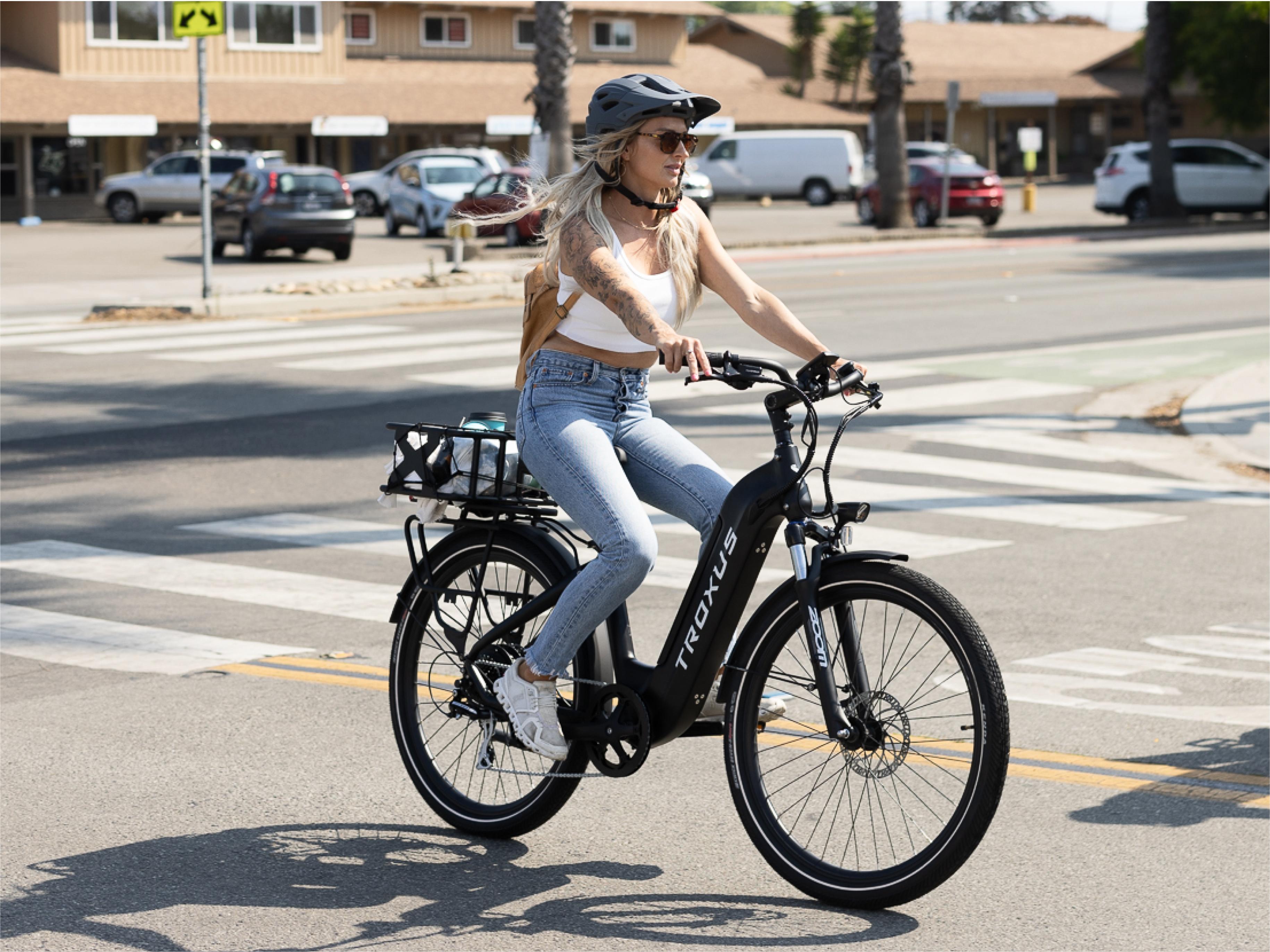Essential Maintenance Practices
Troubleshooting and Repair Tips
Riding Techniques for Optimal Performance
Planning Your E-Bike Adventures
Real-Life User Experiences and Tips
Whether you're someone who commutes and wants to leave the car an outdoor lover in search of trails or a student looking for an eco friendly way to travel to class e-bikes have truly changed how we get around. These advanced bikes offer convenience, sustainability and enjoyment all rolled into one.
However, to fully experience the power and pleasure of your e-bike, it's essential to grasp its workings, maintain it properly and ride it wisely. This guide will take you through everything you need to know to make the most of your e-bike.
Exploring the Inner Workings
An e-bike isn't any ordinary bike, with a battery; it's a finely crafted piece of technology designed to offer a seamless and enjoyable riding experience. Let's take a look at its parts;
- Motor: The engine serves as the core of your electric bike supplying the necessary power for conquering inclines and covering long distances. Engines come in varieties and placements including hub motors and mid drive motors.
- Battery: The battery is like the life force of your e-bike. It energizes the engine. Determines how far you can ride on a charge. The battery's lifespan depends on usage patterns. Taking care of it can prolong its longevity.
- Frame: The frame provides support, for all components. Influences e-bikes weight and resilience. Frames are commonly constructed from aluminum or carbon fiber materials.
- Controls: The handlebars house controls like the throttle, pedal-assist settings, and display screen, which provides crucial information like speed, battery level, and distance traveled.
Personalizing Your Ride Experience
Comfort is key to enjoying your e-bike rides. Here's how to make your bike fit you perfectly:
- Adjust the Seat Height: Ensure your seat height allows for a slight bend in your knee when the pedal is at its lowest point. This reduces strain and improves pedaling efficiency.
- Handlebars: Adjust the handlebars to a comfortable height and angle. This helps maintain a good posture and reduces stress on your wrists and back.
- Suspension Settings: If your e-bike has suspension, adjust it to match your riding style and terrain. A well-tuned suspension can make your ride smoother and more enjoyable.
Essential Maintenance Practices
Routine Maintenance Checklist
Keeping your e-bike in top shape requires regular maintenance. Here's a checklist to follow:
- Cleaning: Clean your e-bike regularly to prevent dirt and grime buildup. Use a soft cloth and mild soap to wipe down the frame and components.
- Lubrication: Lubricate the chain and other moving parts to ensure smooth operation. Use a bike-specific lubricant and avoid over-applying.
- Tire Pressure: Check tire pressure before each ride. Properly inflated tires improve ride quality and reduce the risk of flats.
Caring for the Battery
Your e-bike's battery is crucial for performance and longevity. Maintaining it properly ensures you get the most out of every ride. Follow these tips to keep it in top condition:
- Charging: Charge your battery after each ride for optimal performance. Avoid letting it drain completely, as this can significantly shorten its lifespan. It's best to follow the manufacturer’s guidelines on charging cycles to extend battery life.
- Storage: Store your battery in a cool, dry place away from direct sunlight. Extreme temperatures, both hot and cold, can damage the battery and reduce its efficiency. During the winter months, consider storing the battery indoors.
- Optimization: Use eco-mode or lower pedal-assist levels for longer rides to extend battery life. Additionally, regular cleaning of the battery terminals can improve conductivity and performance.
Troubleshooting and Repair Tips
Common Issues and Solutions
Even the best e-bikes can encounter issues from time to time. Here are some common problems and how to fix them:
- Flat Tires: Carry a patch kit and a portable pump to fix flats on the go. Familiarize yourself with the process to avoid getting stranded. Regularly check your tire pressure and inspect for punctures or wear.
- Loose Connections: Check and tighten all electrical connections regularly. Loose wires can cause performance issues and even pose safety risks. A routine inspection can prevent unexpected breakdowns.
- Brake Adjustments: Ensure your brakes are responsive and effective. Adjust the brake pads and cables as needed to maintain optimal braking performance. Regularly inspect the brake pads for wear and replace them if necessary.
Step-by-Step Repair Guides
Certain repairs are simple enough to handle yourself, with the right tools and a bit of know-how:
- Brake Pad Replacement: Remove the wheel, slide out the old pads, and insert the new ones. Adjust the brake caliper to ensure proper alignment. This process ensures that you have reliable braking power when you need it most.
- Electrical Fixes: For minor electrical issues, check the connections and replace any damaged wires. If the problem persists, consult a professional. Always ensure the e-bike is powered off before attempting repairs to avoid electric shock.
Knowing When to Seek Professional Help
Not all issues can be resolved at home. Understanding when to seek professional assistance is crucial for your safety and the longevity of your e-bike:
- Complex Electrical Issues: If you’re not comfortable handling electrical components, it's best to take your e-bike to a professional. Electrical systems can be intricate and require specialized knowledge.
- Major Mechanical Problems: For issues like a broken motor or frame damage, consult a bike shop with e-bike expertise. Attempting these repairs without proper tools and experience can worsen the problem.
- Regular Tune-Ups: Schedule periodic tune-ups with a professional to keep your e-bike running smoothly. A professional can catch potential issues early and ensure all components are in good working order.
Riding Techniques for Optimal Performance
Mastering Acceleration and Braking
Maximize your e-bike’s efficiency and extend its lifespan with these techniques:
- Smooth Acceleration: Gradually increase speed to preserve battery life and reduce wear on the motor. Sudden acceleration can drain the battery quickly and put unnecessary strain on the motor.
- Controlled Braking: Apply both brakes evenly and avoid sudden stops to maintain control and prevent skidding. Learning to brake smoothly can also extend the life of your brake pads.
Navigating Different Terrains
Adjust your riding style based on the terrain to ensure a safe and enjoyable ride:
- City Streets: Use higher pedal-assist levels for quick acceleration and control in traffic. Stay alert for vehicles and pedestrians, and use bike lanes where available.
- Trails: Lower the pedal-assist level and use gears to handle uneven surfaces. Be prepared for sudden changes in terrain and maintain a steady pace to navigate obstacles.
- Adverse Weather: Slow down and use caution in wet or icy conditions. Ensure your tires have adequate tread for grip, and consider using fenders to keep water and mud off your clothing and bike components.
With the right care and techniques, your e-bike can provide years of efficient and enjoyable riding. Stay proactive in maintenance and mindful in riding, and you'll reap the benefits of this incredible mode of transportation.
Safety and Gear RecommendationsAdapting to Weather Conditions
Weather can significantly impact your ride, and it's essential to be prepared. Stay safe with these tips:
- Rain: Rain can make roads slippery and reduce visibility. Use fenders to keep water off you and your bike, preventing mud splashes. Wear waterproof clothing to stay dry and comfortable, and use bright lights to ensure you're visible to other road users. Consider slowing down and increasing your braking distance.
- Heat: High temperatures can lead to dehydration and heat exhaustion. Make sure to stay hydrated by drinking plenty of water before, during, and after your ride. Take breaks in the shade to cool down and avoid riding during peak sun hours if possible. Wear light, breathable clothing to help regulate your body temperature.
- Low-Light Conditions: Riding in low-light conditions, such as early morning or evening, requires extra caution. Use bright front and rear lights to illuminate your path and make yourself visible to others. Reflective gear, such as vests, bands, or decals, can also enhance your visibility. Plan your route to avoid poorly lit areas and ensure you're familiar with it to reduce the risk of accidents.
No matter the weather, being prepared and adapting your riding strategy can help you stay safe and enjoy your ride.
Joining the E-Bike Community
Essential Safety Gear
Safety should always come first. Equip yourself with these essentials:
- Helmet: Protect your head with a certified helmet. Always wear it, even for short rides. Look for helmets with MIPS technology for added protection.
- Reflective Clothing: Increase your visibility to others by wearing bright, reflective clothing. Consider vests, jackets, and even reflective gloves and shoe covers.
- Lights and Mirrors: Front and rear lights are crucial for night riding. Opt for LED lights with multiple settings for better visibility. Mirrors help you monitor traffic, and handlebar or helmet-mounted mirrors can provide different viewpoints.
Tools and Accessories for Repairs
Be prepared for on-the-go repairs with these tools:
- Multi-Tool: A compact multi-tool can handle most minor adjustments and repairs. Look for one that includes hex wrenches, screwdrivers, and even a chain breaker.
- Tire Levers: Essential for fixing flats. Make sure they’re sturdy but lightweight. Some tire levers also include a small notch for deflating Schrader valves.
- Portable Pump: A small pump ensures you can inflate your tires anywhere. Consider a pump with a pressure gauge to ensure your tires are at the optimal pressure.
- Spare Tubes and Patches: Always carry a spare tube or patch kit in case of a flat tire. Make sure to check the size and valve type before purchasing.
- Bungee Cords or Cargo Straps: These can come in handy for securing cargo or additional gear on your bike.
- First Aid Kit: Accidents do happen, so it's always wise to have a basic first aid kit with you on rides. Pack bandages, antiseptic wipes, pain relievers, and any necessary medications.
Joining the E-Bike Community
E-biking is not just a mode of transportation, it's also a community. Joining this community can provide valuable resources and connections:
- Local Groups: Check for local e-bike groups or clubs in your area. These groups often organize group rides or events and can offer advice and support for your e-biking journey.
- Online Forums: Online forums dedicated to e-biking are a great resource for troubleshooting issues, learning about new products, and connecting with other riders.
- E-Bike Events: Look out for e-bike expos or festivals in your area. These events bring together e-bike manufacturers, retailers.

Planning Your E-Bike Adventures
Route Planning Strategies
Good planning makes for great rides. Here’s how to plan your route:
- Navigation Apps: Use apps like Google Maps or Komoot to find bike-friendly routes. These apps often allow you to select routes based on your e-bike's battery range and the type of terrain.
- Explore New Destinations: Look for scenic routes, parks, and trails to make your rides enjoyable and varied. Websites like TrailLink can help you discover hidden gems in your area.
- Consider Elevation: Check elevation profiles to avoid overly steep climbs that can drain your battery quickly. Apps like RideWithGPS can show you detailed elevation data for your planned route.
- Battery and Charging Stops: Plan your route to include stops for recharging your battery. Look for public charging stations or plan a stop at a coffee shop or restaurant where you can recharge while taking a break.
Staying Safe on the Road
Regardless of your route, it's vital to follow road safety rules and ride defensively:
- Follow Traffic Rules: E-bikes are considered motorized vehicles in some countries and may be subject to traffic laws like speed limits, traffic signals, and helmet requirements. Make sure to familiarize yourself with local regulations.
- Stay Visible: Use lights, reflective gear,
Discovering New Destinations
There’s a world of adventure waiting for you:
- Local Trails: Research local trails that are e-bike friendly. Parks often have designated bike paths. Check local regulations to ensure e-bikes are allowed on your chosen trails.
- Scenic Routes: Find routes with beautiful scenery to enhance your riding experience. Coastal paths, forest trails, and countryside roads are great options. Using a camera or a GoPro can help you capture these beautiful moments.
- Bike-Friendly Cities: Explore cities known for their bike infrastructure. They often offer safer and more enjoyable rides. Cities like Amsterdam, Copenhagen, and Portland are renowned for their cycling culture and infrastructure.
Real-Life User Experiences and Tips
Stories from Experienced Riders
Learn from those who’ve mastered e-biking:
This user story describes the journey of a 60-year-old computer architect who has discovered a passion for e-bike riding after decades of working at a hospital. Initially introduced to e-bikes during the pandemic, the person found early models lacking, but in 2022, was captivated by the Troxus Lynx showcased in YouTube videos. By 2023, they acquired their own Troxus Lynx and began exploring local bike paths in Connecticut with its powerful motor and long-lasting battery.
Eager to connect with like-minded riders, the individual seeks out local riding groups through platforms like Facebook, Meetup, and local bike shops. They offer advice on integrating into existing cycling groups and emphasize becoming knowledgeable about e-bikes to support others. Practical tips include familiarizing oneself with ride areas, managing range anxiety, and organizing group rides effectively, including safety protocols and post-ride feedback.
The story concludes with a reminder to prioritize enjoyment throughout the e-biking experience, ensuring that each outing contributes to building a cohesive and enjoyable community of e-riders.
Alex, a 65-year-old man nearing retirement with failing knee joints and a medically fused ankle, sought an e-bike to explore the outdoors and make his 10-mile commutes more enjoyable. He found the Troxus Skyhopper through a Facebook ad and, despite initial skepticism, decided to purchase it after researching reviews and joining the Troxus Users group.
Alex's motivation included a desire to join the Troxus Ambassador Program and his upcoming five-week adventure sabbatical to the Arizona Desert. The Skyhopper's quick shipping sealed the deal. During his trip, John discovered the e-bike alleviated his knee pain by providing gentle exercise. It also allowed him to navigate the desert, collect supplies, and transport items like firewood. The step-through design was crucial for his mobility issues, and the bike's durable frame and portable battery system, which could be charged via his solar panels, proved highly practical. The Skyhopper's compact size made it easy to transport in his minivan, enhancing his overall experience.
Renata Engel, a horse trainer and bike enthusiast, blends her passion for custom bikes with her profession. Living by the beach, she rides daily and owns a diverse collection of bikes, from vintage to BMX. Seeking a convenient and efficient way to navigate horse shows, Renata was captivated by the Troxus Skyhopper's compact design, powerful motor, and sturdy build.
The Skyhopper's wide tires, full fenders, and hill-climbing power make it ideal for traversing dirt and gravel roads at horse shows. It’s stable, quiet, and doesn't spook horses, with a trunk bag on the luggage rack for supplies. Its compact size fits perfectly in her horse trailer or RV. Beyond work, Renata enjoys using the Skyhopper for beach rides and trips to town, finding it sporty, powerful, and fun.

Practical Advice for Beginners
Starting your e-bike journey? Here are some tips to help you get started and enjoy a smooth ride:
- Start Slow: Get comfortable with your e-bike’s controls and features by taking short, easy rides first. Familiarize yourself with pedal-assist levels and how they affect your ride. This will help you understand how much effort you need to put in and how the bike responds under different conditions.
- Build Confidence:Practice riding in safe, low-traffic areas before venturing onto busier streets or tougher terrains. Spend some time riding in parks or quiet neighborhoods to get a feel for your e-bike. Learning to navigate safely in different conditions will boost your confidence and prepare you for diverse riding environments.
- Join a Group:Riding with others can boost your confidence and provide valuable tips and support. Look for local e-bike clubs or online communities where you can share experiences, ask for advice, and join group rides. Being part of a community can make your e-bike journey more enjoyable and informative, as you'll have a network of fellow riders to learn from and ride with.
Benefits of Community Engagement
Being part of a community significantly enhances your e-bike experience in various ways:
- Shared Knowledge: Tap into a wealth of information from experienced riders who can offer valuable tips and advice on everything from maintenance to finding the best trails. This collective wisdom can help you improve your riding skills and knowledge about e-bikes.
- Social Connections:Meet new friends and like-minded individuals who share your passion for e-biking. These relationships can lead to lasting friendships and a supportive network of fellow riders who encourage and motivate each other.
- Group Rides:Participate in organized group rides that allow you to explore new routes and discover hidden gems in your area. Riding with a group can also enhance safety and provide a sense of camaraderie as you share the journey with others.
Engaging with an e-bike community enriches your riding experience and opens up opportunities for learning, socializing, and exploring together.
Engaging in Social Media
Social media is a great way to stay connected:
- Instagram: Follow e-bike influencers and brands for inspiration and tips.
- Facebook Groups:Join groups dedicated to e-biking to share experiences and get advice.
- YouTube:Watch tutorials and reviews to learn more about your e-bike and riding techniques.
Conclusion
E-bikes are transforming the way we commute and explore the outdoors. By understanding your e-bike, maintaining it properly, and using smart riding techniques, you can unlock its full potential.
Remember, owning an e-bike is not just about having a convenient mode of transportation—it’s about being part of a vibrant community and enjoying the freedom to explore. Keep your e-bike in top shape, practice safe riding habits, and connect with fellow e-bike enthusiasts.
Ready to take your e-bike experience to the next level? Sign up for our newsletter for more tips, exclusive deals, and community events. Happy riding!

